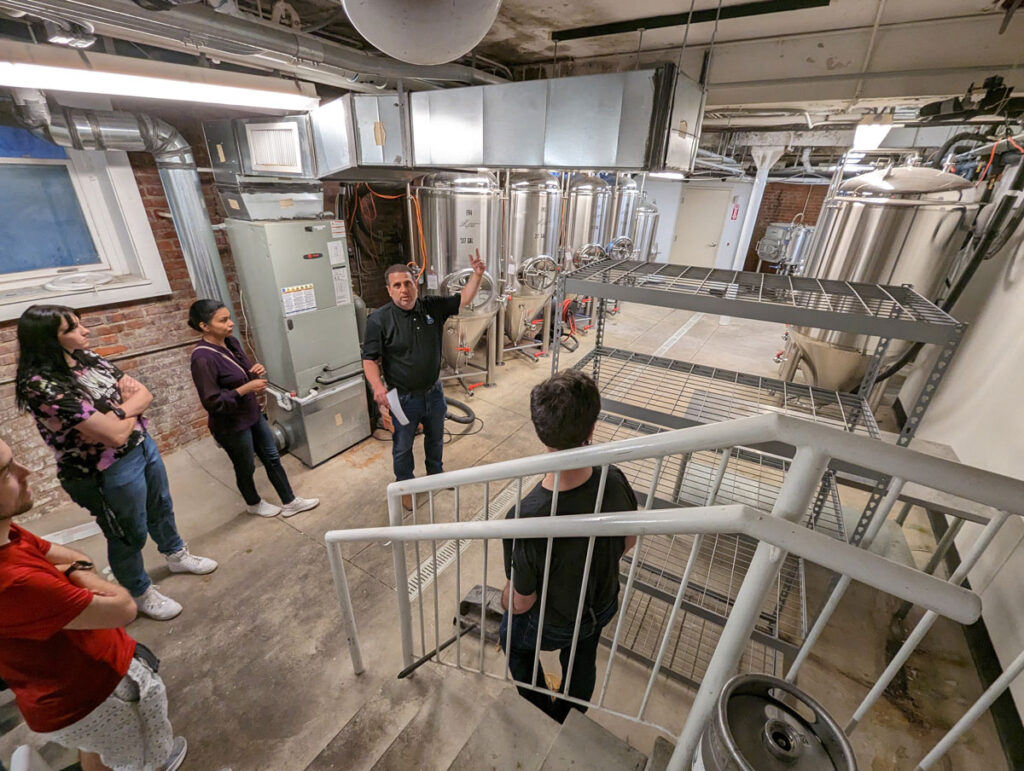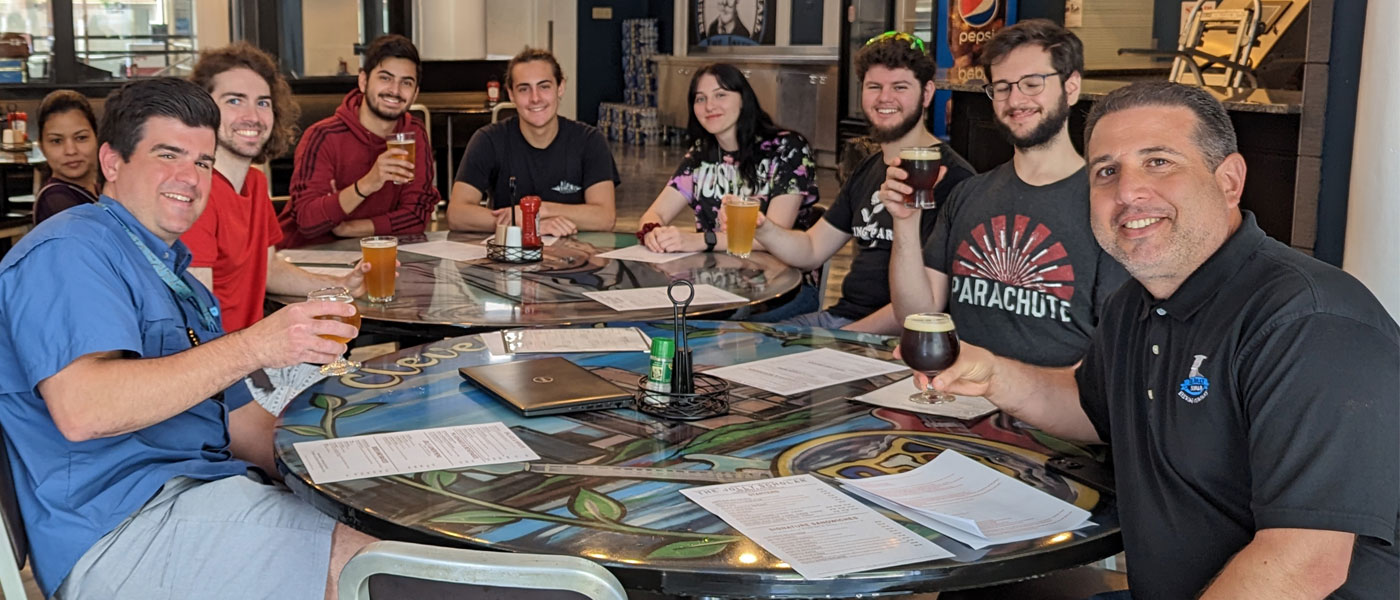Editor’s note: The legal age to consume alcohol in the United States is 21. Those under 21 should not consume or purchase alcohol.
When the COVID-19 pandemic struck in 2020, Aidan Klemm and his roommate, PhD candidate William Dean, were looking for ways to fill their time. That’s when they decided to home-brew their first batch of hefeweizen, a German beer that Klemm said is “pretty standard and easy to [make].”
In addition to gaining insights through his research—which is focused on carbon dioxide capture—Klemm, now a fourth-year PhD student, first learned the skills needed to brew beer through a class right here at Case Western Reserve University. A similar course, Chemical and Biomolecular Engineering 430: Design and Production of Fermented Beverages, was offered this summer.
“I was interested in biochemical engineering,” he said. “And it just so happens that [beer] brewing is exactly that—a biochemical engineering process.”
A pot, a spoon and a bucket—one that has a lid with a hole to insert an airlock—were the three main tools Klemm and Dean needed to get started with their own venture, all of which they found at a home-brewing store. They purchased ingredients there, too, neatly packaged in a recipe kit, providing them with the malt extract and hops that would produce the hefeweizen flavor.

Just two years after brewing that first batch, the duo, alongside some of their engineering peers, took home first place in three out of seven categories at the American Institute of Chemical Engineers beer-brewing competition. They hope to have similar success at this year’s event in November.
Flexing their experience from the past four years, Klemm and Dean were both guest lecturers in “Design and Production of Fermented Beverages.” The course is taught by Chris Wirth, associate professor in the Department of Chemical and Biomolecular Engineering.
In honor of International Beer Day (Aug. 4), read more about the science of brewing beer and check out Klemm’s insights.
There are a few vocabulary words to get familiar with.
Malt is the grain that beer is made from. For homebrewers, it’s common to use a malt extract, which is essentially a syrup where all of the sugars from the malt have been extracted. Hops are a really important ingredient as well. That’s where the bitterness of beer comes in. If you just fermented malt, it would probably just taste like grain water.
Wort is what beer is called in the pre-fermentation phase. After fermenting, it’s called beer.
Ales are simpler to brew than lagers.
Any kind of ale, whether it’s an Indian Pale Ale or wheat ale, is easier to start with because you don’t need any temperature control. You can just do it at room temperature, so it’s much easier to start off.
Lagers are different because they use a different yeast, a bottom fermenting yeast, those require lower temperatures during fermentation. So, the Oktoberfest I made was definitely the most difficult recipe because I didn’t have temperature control and had to finagle some things. The apartment we were living in had a sunroom that wasn’t heated in the winter, so I set it close to there during fermentation. Then there is a ‘lagering out’ step, where you basically cool it down to freezing to cause all of the yeast to come out of suspension. For that, I put it fully in the sun room.
It’s absolutely critical to sanitize.
Sanitation is absolutely the most essential step. It’s huge, huge, huge. Making sure that all of your equipment is fully sanitized, and does not have any contaminant bacteria or wild yeast in it, is the biggest step of all. If not properly sanitized, you can produce what are called ‘off flavors,’ like buttered popcorn or banana. Use a food-safe sanitizer to make sure all of the equipment is clean.


